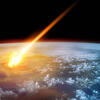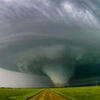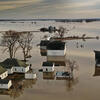We live on volatile planet. Tectonic plates continue to move. Volcanoes unpredictably erupt. Tornadoes touch down in unexpected, and even local, places. 2020 was one of the most active hurricane seasons in history and in September 2021, Hurricane Ida brought an EF2 tornado to Temple University Ambler and the surrounding community. Natural disasters are major adverse events, but they often result from the natural processes of the Earth - the impact of climate change on the ferocity and frequency of natural disasters is being closely studied by researchers all over the globe. Join us as we explore earthquakes, hurricanes, tornadoes, tsunamis, volcanoes, thunderstorms and more!
Separating Natural Disaster Facts from Fiction
Hollywood has a real talent for presenting natural disasters on film. The spectacle is enormous, the devastation complete. It can take your breath away! For students at Temple, it’s also an excellent jumping off point for learning the actual science behind earthquakes, volcanoes, tsunamis and more. The Department of Earth and Environmental Science in Temple’s College of Science and Technology offers the course Disasters: Geology vs. Hollywood (it’s one to Temple’s “Cool Classes” offered through the GenEd program) to any students that want to separate scientific fact from Hollywood fiction. Students learn the fundamentals of plate tectonics, how magmatic composition controls volcanic explosivity, how to calculate earthquake locations from seismic data, and how to prepare a disaster readiness plan for a major U.S. city. Here are just a few reactions from Earth and Environmental Science professors to how earthquakes, volcanic eruptions and meteor strikes have been presented on film.






